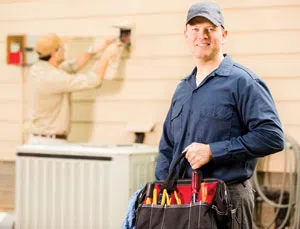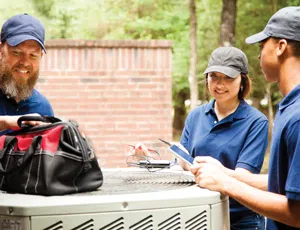Maintaining an ongoing relationship and communication with quality customers will result in greater revenue opportunities.
Planned Maintenance, or Preventative Maintenance (PM), is a proactive service done to ensure more expensive repairs do not occur — or occur far less frequently — and that the system operates in an optimal way.
What is important is what constitutes the maintenance … how often and when it is done, and what can be expected in return for the effort and expense (which is to say, what is the pay back on investment?). This last part is what will be important to the customer and will constitute the main body of your value statement when recommending a PM program.
Previously, I covered what should go into a good PM program (Be Proactive with Refrigeration Maintenance). Having customers sign on for PM programs presents a substantial benefit to the contractor and it is these two benefits that we will explore in this article.
Benefits to the Customer
Energy Efficiency. To start with, let’s look at what a refrigeration system needs to do its job, which is to take heat from one area and move it to another to dispose of it or find a good use for it. For the system to do this, a temperature difference must exist between the refrigerant in the evaporator and condenser and the air or water it is taking heat from or adding to.
The compressor is the component that supplies the energy to increase the pressure and temperature of the refrigerant in the condenser where the energy absorbed by the evaporator and added by the work of the compressor is rejected.
The closer the refrigerant and air/water are in temperature, the less energy that is required to move the heat. This is due to the pressure difference between the evaporator and condenser being smaller, so the compressor is required to do less work to increase the pressure between the two.
Nobody wants to pay higher operating costs that will only get higher until something fails and then incur even higher costs to fix it.
Worse still, unless the underlying reasons for the high operating costs are addressed, replacing a failed part will only return the system to operating as it was before it failed, which is poorly.
Reducing Product Shrink. Catching issues before they become major problems can save a lot of money as replacing components that have failed can add up to thousands of dollars quickly.
Cleaning a coil or replacing a weak start capacitor is a bargain compared to replacing a compressor and all the associated labor that goes with it. Making the customer aware of what was done and the benefit of doing it in cost savings and comfort will add value to the service you provide in their mind.
Costs aside, an iced evaporator or plugged condenser coil of a walk-in box can spell major grief when a room full of product is lost along with the profits that it would have generated. Correcting the root cause beforehand is very much preferable.
Benefits to the Contractor
Profitable Relationships. If you have tried to hire good employees, you probably can attest to how challenging it is. It is better to develop a relationship that is beneficial for both the company as well as the good techs and work as hard as possible to keep them than have high turnover in staffing. In many ways it is the same for customers.
Developing a long term and profitable relationship with customers ensures stable work and sales opportunities down the road. Even if those customers move across town, they will likely prefer to still have you as their service and sales provider.
They trust your company and the importance of this is hard to over estimate given the general lack of trust that seems to be prevalent nowadays. Imagine how having a good base of loyal returning customers can help provide a stable and reliable source of business income.
Sample Check List. Since we have already established that energy is required to move heat from one area to another and we have pointed out the key things that are required for this to occur, it only makes sense to focus a PM program on ensuring that these key elements occur using as little energy as possible and letting the system operate as cool as possible.
It is safe to say that any system operating for 20 years with the same compressor almost certainly never operated hotter than required, had poor voltage supplied to it and had good airflow and tight electrical connections.
It is possible to have a simple PM program that is also very effective. It is also easier to explain the benefits to somebody if the program is uncomplicated and the value of what is done is directly relatable to a key operating point.
The points to emphasize are as follows:
- Checking the pressure and temperature of both the air as well as the high and low side refrigerant. Also check the airflow to make sure it is correct and check these with the manufacturer’s specifications. Also make sure to show the customer that the manufacturer requires these values so that they know there is a legitimate reason for you doing it.
- Replacing and/or cleaning air filters. This will ensure good airflow resulting in more effective treatment of the air and lower operating costs. Stress that good airflow is the key to a properly operating system and without it they will be paying for energy that is not doing anything useful.
- Inspection and, if necessary, cleaning of both the evaporator and condenser coils. Doing so will result in better movement of heat from the inside to outside and less cost to do so. It will also keep the compressor operating cooler which extends motor life and greatly reduce the chance of the refrigerant damaging the compressor.
- Checking the electrical quality. Measuring the voltage, current and power factor values will make sure the electrical motors in the system are not using more power and operating hotter than necessary. This is very important in the summer months when the load on the utilities is high and voltage can suffer. Customers will also be able to relate to this as it gets good press coverage. Power factor can be explained as essentially gas mileage as it relates to how efficiently the system uses the electricity that is supplied to it. Poor power factor means that the system cannot use all the energy that is supplied to it (and is being paid for) and what is not used is wasted as heat.
- General inspection and maintenance of the system components and surrounding area. This covers the usual stuff from fan belts to electrical connections. Stress that things like these can result in failure down the road if they are not corrected. Point out that electrical connections need to be tight to avoid overheating or interrupting the power. Vibrations or slipping belts are not only a noise nuisance but also cause other components to fail prematurely.
Summary
The benefits of a PM program for the customer is the peace of mind that their system is inspected and maintained on a regular basis without the worry of what steps are required and when to keep their system healthy and working properly.
Any issues that occur are likely to be caught early and corrected before they can become major problems and result in a large expenditure to correct.
For the contractor, maintaining an ongoing relationship and communication with quality customers will result in greater revenue opportunities and lower effort required in bringing in additional business. Good service also results in good recommendations in both social media as well as traditional word of mouth.





